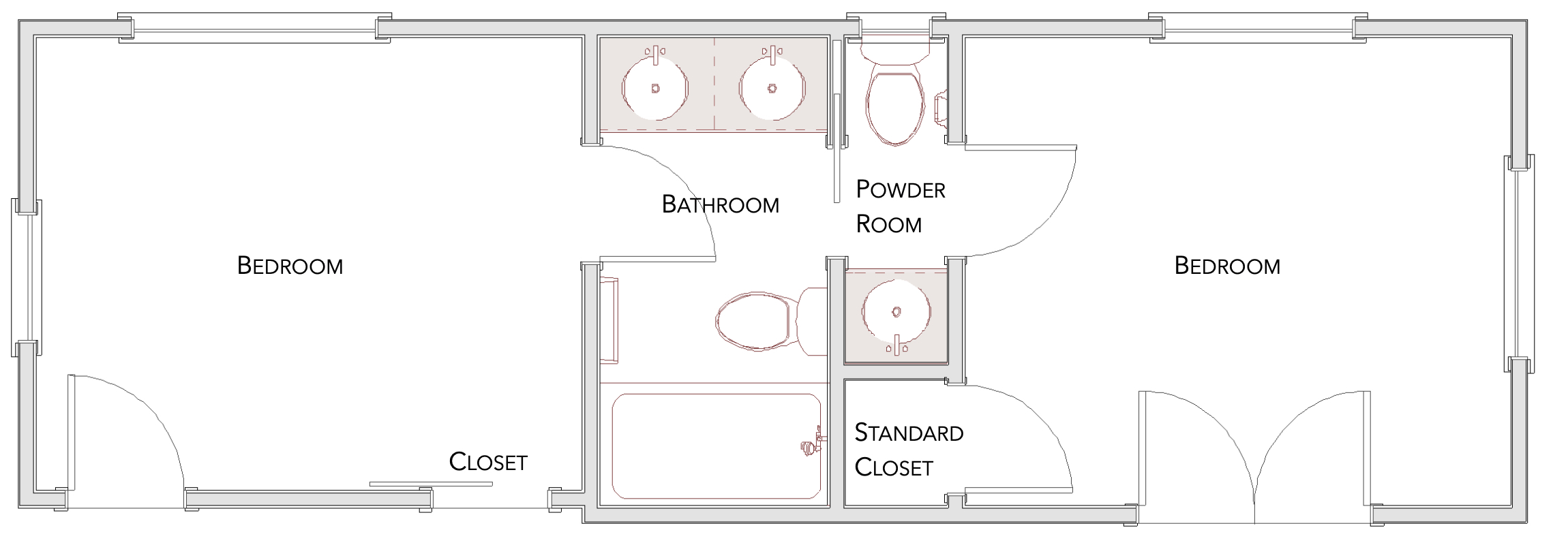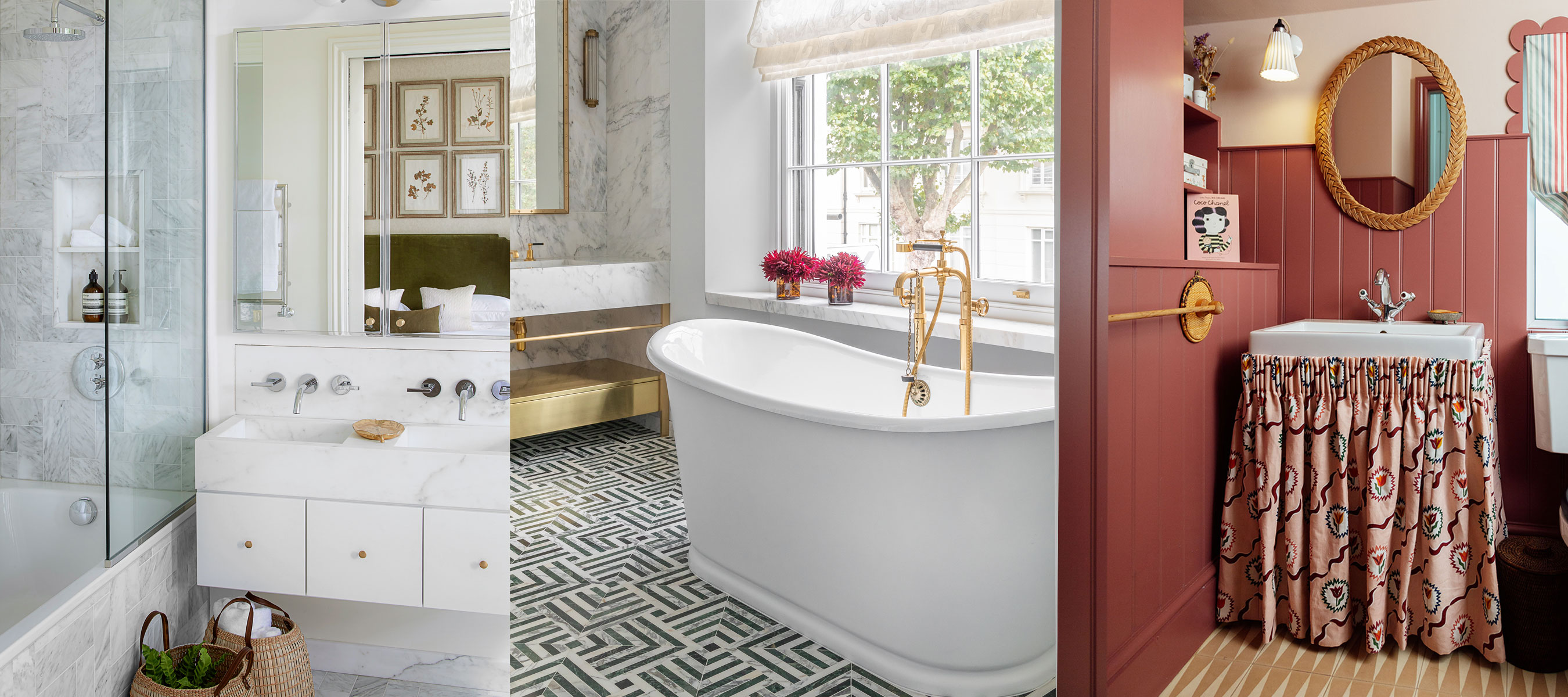Essential Features and Fixtures

Combining two small bathrooms into one larger space presents a unique opportunity to create a functional and aesthetically pleasing bathroom. However, careful consideration must be given to the selection of fixtures and features that optimize space and enhance usability.
Bathroom Fixtures
The choice of bathroom fixtures significantly impacts the overall functionality and aesthetics of the combined bathroom. Space limitations often necessitate selecting fixtures that are compact and efficient while maintaining functionality.
Shower Heads
Shower heads are available in various styles and sizes, offering different water flow patterns and spray options. For a combined bathroom, a rain shower head is a popular choice as it creates a spa-like experience and is ideal for a larger shower space. However, if space is limited, a handheld shower head offers flexibility and can be easily adjusted for different shower needs.
Toilets
Toilets come in various sizes, styles, and flushing mechanisms. A dual-flush toilet offers water conservation benefits, while a compact toilet is ideal for small spaces. A wall-mounted toilet can help create a spacious and modern look, especially in a combined bathroom.
Sinks
Sinks are a crucial part of any bathroom, and their choice depends on the available space and desired aesthetics. Undermount sinks offer a sleek and modern look and are easier to clean. Vessel sinks are visually appealing and can be used with various vanity styles. Double sinks are ideal for a combined bathroom, as they provide separate spaces for two users.
Vanities
Vanities are the focal point of a bathroom and offer essential storage solutions. A floating vanity creates a sense of space and is ideal for smaller bathrooms. A corner vanity utilizes often unused space effectively. A custom vanity allows for tailored storage solutions to meet specific needs.
Essential Features
Beyond fixtures, several essential features are crucial for creating a functional and comfortable combined bathroom.
Storage Solutions
Adequate storage is essential in a combined bathroom to keep the space organized and clutter-free. Wall-mounted cabinets, shelves, and drawers offer efficient storage options. Towel racks and toilet paper holders provide convenient access to essential items.
Lighting
Proper lighting is crucial for creating a functional and inviting bathroom. Natural light should be maximized through windows, but artificial lighting is essential for evening use. Recessed lighting offers a clean and modern look, while task lighting provides targeted illumination for specific areas, such as the mirror or vanity.
Ventilation
Good ventilation is crucial to prevent moisture buildup and ensure a healthy bathroom environment. Exhaust fans are essential for removing moisture and odors. Windows can also provide natural ventilation.
Bathroom Flooring and Wall Materials, Combining two small bathrooms into one
The choice of flooring and wall materials significantly impacts the overall aesthetics and functionality of the combined bathroom.
Flooring
Durable and waterproof flooring options are essential for a bathroom. Ceramic tiles are a popular choice due to their durability, water resistance, and wide variety of styles. Porcelain tiles are even more durable and water-resistant than ceramic tiles. Natural stone tiles offer a luxurious and elegant look but require more maintenance. Laminate flooring is a more affordable option but is not as water-resistant as tile.
Wall Materials
Wall materials should be durable, water-resistant, and easy to clean. Ceramic tiles are a popular choice for bathroom walls due to their durability, water resistance, and wide variety of styles. Porcelain tiles are even more durable and water-resistant than ceramic tiles. Waterproof paint is a more affordable option but may not be as durable as tile.
Bathroom Vanity Layout
A well-designed bathroom vanity layout provides ample storage space and maximizes functionality.
Vanity Layout
A typical bathroom vanity layout includes a sink, a countertop, and storage space below. The layout can be customized to meet specific needs and preferences. For a combined bathroom, a double sink vanity with ample storage is ideal.
Storage Options
The storage options within a vanity can include drawers, cabinets, and shelves. Drawers are ideal for storing smaller items, such as toiletries and makeup. Cabinets are suitable for larger items, such as towels and linens. Shelves can be used for displaying decorative items or storing frequently used items.
Vanity Features
Additional features can be incorporated into the vanity layout to enhance functionality and aesthetics. A mirror above the sink is essential for grooming. Lighting can be incorporated into the vanity to provide adequate illumination for grooming and makeup application. A countertop provides a surface for placing toiletries and other items.
Budgeting and Project Management: Combining Two Small Bathrooms Into One

Combining two small bathrooms into one can be a significant renovation project, requiring careful planning and budgeting to ensure a successful outcome. This section will provide insights into creating a realistic budget, managing expenses, finding affordable materials, and establishing a timeline for your bathroom renovation.
Cost Breakdown
A comprehensive cost breakdown is crucial for managing your bathroom renovation budget effectively. The following table Artikels the estimated costs involved, including labor, materials, and permits.
| Category | Estimated Cost | Notes |
|---|---|---|
| Labor | $5,000 – $15,000 | This cost varies based on the complexity of the project, labor rates in your area, and the duration of the renovation. |
| Materials | $3,000 – $10,000 | Materials include plumbing fixtures, tiles, flooring, cabinets, vanities, countertops, lighting, and paint. |
| Permits | $200 – $500 | Permits are required for structural changes and plumbing work. |
| Demolition and Removal | $500 – $1,500 | This cost covers the removal of existing fixtures, walls, and debris. |
| Unexpected Expenses | $500 – $1,000 | Always allocate a contingency fund for unexpected costs that may arise during the renovation. |
Creating a Realistic Budget
Creating a realistic budget involves carefully considering all aspects of the renovation, including labor, materials, permits, and potential unexpected expenses.
- Research and Compare Prices: Obtain quotes from multiple contractors and suppliers to compare pricing for labor and materials.
- Prioritize Needs vs. Wants: Differentiate between essential features and desired extras. Focus on the most important features to stay within budget.
- Consider DIY Options: Explore DIY projects for tasks like painting, tiling, or installing fixtures to potentially reduce labor costs.
- Set a Realistic Timeline: Allocate sufficient time for the renovation process, considering potential delays.
- Track Expenses: Keep detailed records of all expenses throughout the project to monitor progress and ensure you stay within budget.
Finding Affordable Materials
Finding affordable materials without compromising quality is essential for managing your renovation budget.
- Shop Around: Compare prices from multiple retailers, including online stores and local suppliers.
- Consider Sales and Discounts: Look for sales, clearance events, and discounts on materials.
- Explore Secondhand Options: Consider salvaged or repurposed materials, such as antique fixtures or reclaimed wood.
- Choose Budget-Friendly Materials: Select affordable yet durable materials like ceramic tiles, laminate countertops, and budget-friendly vanities.
Project Timeline
A well-defined project timeline helps ensure a smooth and timely renovation process.
- Planning and Design: 2-4 weeks
- Permitting and Contractor Selection: 1-2 weeks
- Demolition and Removal: 1-2 weeks
- Plumbing and Electrical Work: 2-3 weeks
- Framing and Drywall: 2-3 weeks
- Finishing Touches: 1-2 weeks
Contractors and Suppliers
Choosing reliable contractors and suppliers is crucial for a successful renovation.
- General Contractor: A general contractor oversees the entire project, managing subcontractors and ensuring timely completion.
- Plumber: A plumber installs and repairs plumbing fixtures, including sinks, toilets, and showers.
- Electrician: An electrician handles all electrical work, including wiring, lighting fixtures, and outlets.
- Tile Installer: A tile installer specializes in installing tiles for floors, walls, and backsplashes.
- Cabinet Maker or Supplier: A cabinet maker or supplier provides custom or prefabricated cabinets for storage and vanity units.
